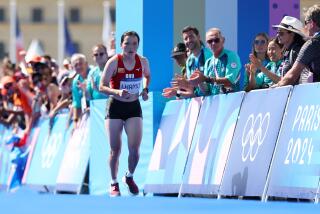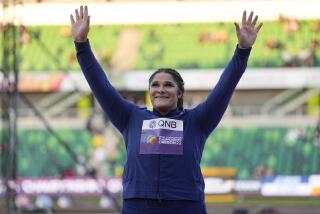Two Runners, Worlds Apart
- Share via
Libbie Hickman of the United States and Sirivanh Ketavong of Laos are Olympic hopefuls, but the similarities end there. One has the benefit of an extensive and costly system designed to groom elite athletes. The other fends for herself.
Libbie Hickman
Libbie Hickman will not say how much she earns as a top female distance runner in the United States. But the 35-year-old receives enough money from Internet and athletic shoe sponsorships to train full time without needing to work or apply for U.S. track and Olympic grants. That means Hickman can afford to travel throughout North America and Europe for marathons and 5,000- and 10,000-meter races. She can leave her Fort Collins, Colo., home in the cold winter months to train in California.
Hickman also gets all the equipment she needs, going through as many as 30 pairs of shoes a year. “The last thing you want to do is get injured,” she says. “So we don’t take a chance on running in flat shoes.”
Sirivanh Ketavong
Sirivanh Ketavong lives with her parents and earns about $175 a month as a secretary in Vientiane, the capital of Laos. Though she is her nation’s top female distance runner
and competed in the 1996 Atlanta Games marathon, the 29-year-old gets scant financial assistance. “I cannot say I did not receive any money from the [Lao Olympic Committee] because this year I got about $70 pocket money for taking part in a half-marathon in Cambodia,” she says.
But there is no money to train or compete in Europe. Ketavong rides her bicycle to the national stadium after work each day. She ran in the same shoes for nearly four years until an American aid worker based in Laos recently spent $30 to buy her a new pair. He also gave her a running magazine with training tips.
*
Compiled by Times staff writers DAVID WHARTON and ALAN ABRAHAMSON
More to Read
Go beyond the scoreboard
Get the latest on L.A.'s teams in the daily Sports Report newsletter.
You may occasionally receive promotional content from the Los Angeles Times.






